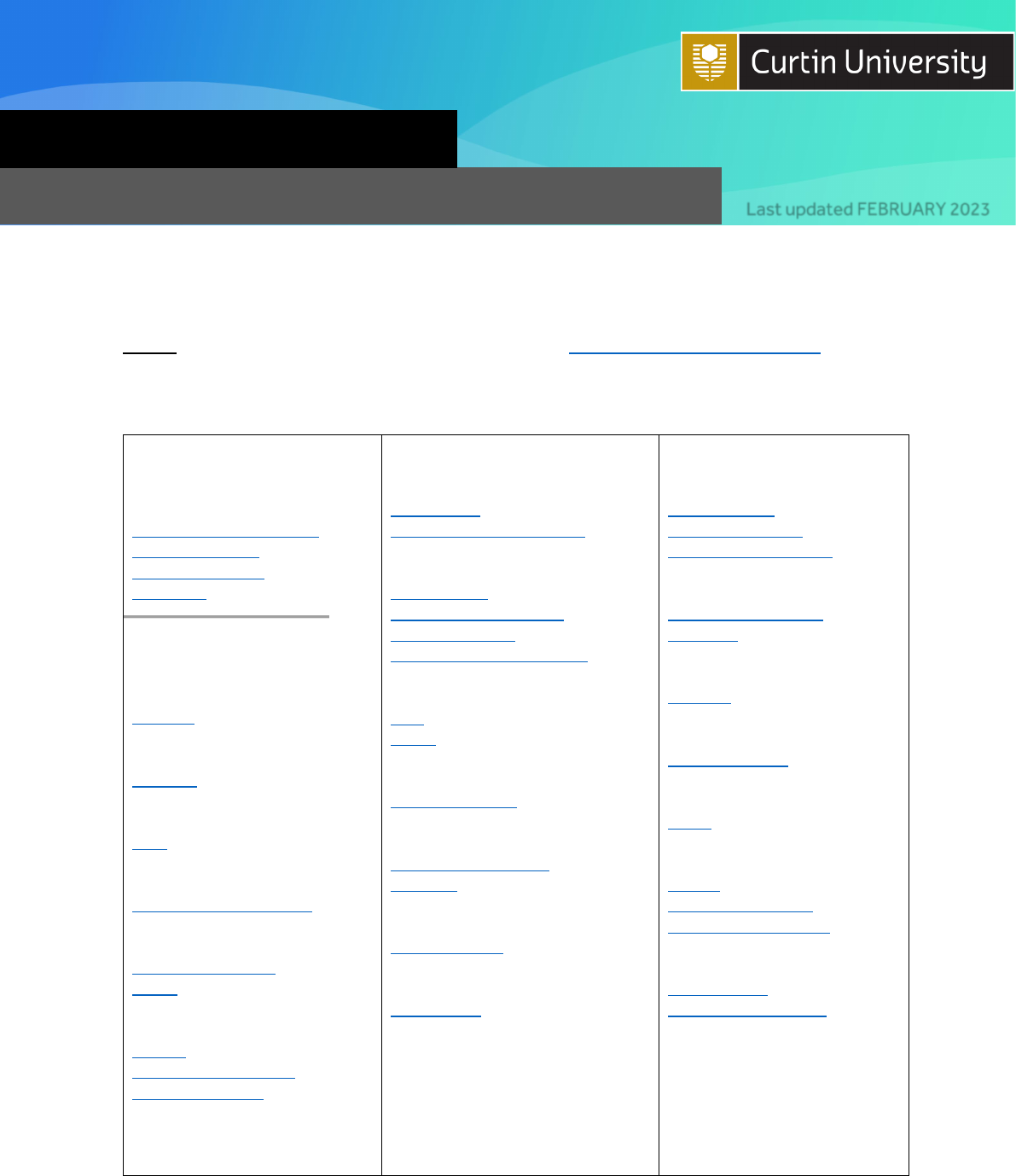
bit.ly/curtinuniskills
Page 1 of 9
Last updated FEBRUARY 2023
Chicago B reference types for EndNote
DIGITAL SKILLS
This brief guide outlines which reference types to select and which fields to populate in EndNote
when using the Chicago 17th B Curtin EndNote style.
Always check your EndNote reference outputs against the Chicago 17th B referencing guide
for
accuracy.
Guide contents
Important information for
all reference types:
Populating the author field
Title capitalisation
Manual changes to
references
EndNote reference types
Audiovisual Material
TV series
Blog
Blog post
Book
Book
Book Section
Chapter in an edited book
Conference Paper
Conference paper or
poster
Dataset
Dataset
Dataset created using a
company database
Page
2
3
3
3
3
4
4
4
Film or Broadcast
Film or video
YouTube or streaming video
Journal Article
Journal article
Journal article – Advance
online publication
Journal article – Supplement
Music
Song
Album
Newspaper Article
Newspaper article
Pamphlet
Brochure, fact sheet or
pamphlet
Podcast
Podcast episode
Press Release
Press release
Page
4
5
5
5
5
6
6
6
6
7
7
Report
Government or
organisation report
Company annual report
Social Media
Facebook, Twitter and
Instagram
Standard
Standard
Television Episode
TV series episode
Thesis
Thesis
Unpublished Work
Lecture
Company or industry
profile from a database
Web Page
Entire website
Webpage on a website
Page
7
7
8
8
8
8
9
9
9
9

Chicago 17th B reference types for EndNote
bit.ly/curtinuniskills
Page 2 of 9
Important information for all reference types
When entering a reference into EndNote you only need to include the basic data. Unless stated
otherwise in this guide, do not include punctuation or formatting such as colons, full stops, brackets,
and italics, or text such as In, Retrieved from, ed., Ed. in the reference. The Chicago 17th B Curtin
style will include this automatically when formatting the reference.
Populating the author field
When entering personal authors or editors into EndNote use the format Last Name, First Name
Example: Shakespeare, William
When entering an organisation as the author, include a comma at the end of the organisation’s
name so EndNote displays the complete name in the reference
Example: Department of Health,
You must use the correct capitalisation for author details. EndNote will display the author’s
information with the exact capitalisation that you have used
Example: Smith, Jane A.
Title capitalisation
Chicago uses headline style capitalisation, where all significant words in the title start with a capital
letter (e.g. Philosophy and Poetry: A New Look at an Old Quarrel). Stop words such as: a, is, it, at, on,
etc. are not capitalised.
When two or more capitalised letters appear in a title (e.g. ANZ, USA), EndNote will incorrectly
display the information as Anz or Usa. To ensure abbreviations and acronyms display correctly:
1. Select Edit (Windows) or EndNote (Mac) and click on Preferences
2. Select the Change Case option
3. Enter the abbreviation/ acronym etc. with the correct capitalisation, click Apply and OK.
Manual changes to references
Chicago is a complex style and in some instances EndNote may not be able to accommodate all the
elements or formatting required for a particular reference type. If manual changes are required, you
will need to make these once you have finished creating your reference list in Word and
converted
your document to plain text. To convert to plain text:
1. In the CWYW toolbar click Convert Citations and Bibliography (Windows) or Tools (MAC)
and select Convert to Plain Text
2. A new unsaved document with no field codes (not linked to EndNote) will be created
3. Save it with a new file name (your original document with the field codes will be unchanged
and still be linked to EndNote
4. Manually edit the references in the plain text copy of the document.
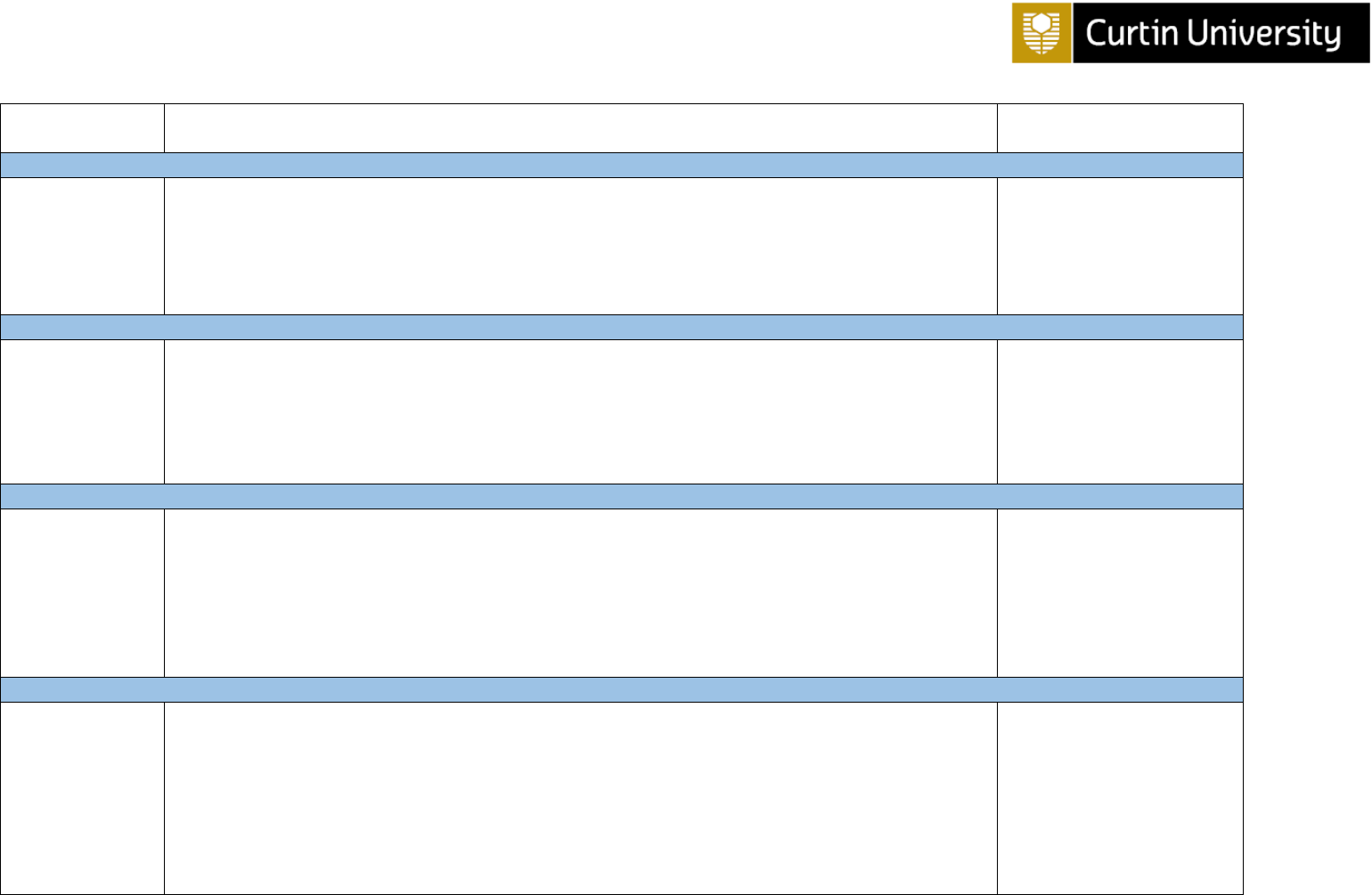
Chicago 17th B reference types for EndNote
bit.ly/curtinuniskills Page 3 of 9
Use for
EndNote fields + reference example
Notes
Reference type – Audiovisual Material
TV series
For a single episode
from a series use
Television Episode
Author, Year, Title, Type, Series Editor, Place Published, Publisher, URL
Cawley, Tucker. 2019. Merry Happy Whatever. Television series. Directed by Pamela Fryman, Phill
Lewis and Gloria Calderon Kellett. Los Angeles: Netflix.
Enter Television series in
the Type field.
Reference type – Blog
Blog
Author, Year, Title of Entry, Title of WebLog, Date, URL
Huberman, Ben. 2016. "Live from Paris: David Lebovitz on Food, France, and Writing." Discover (blog),
March 3, 2016. https://discover.wordpress.com/2016/03/03/david-lebovitz-food-france-
writing/.
Enter blog in the Type of
Medium field if the word
‘blog’ doesn’t appear in the
title.
Reference type – Book
Book
Author, Year, Title, Edition, Place Published, Publisher, DOI or URL
Doyle, Timothy, Doug McEachern, and Sherilyn MacGregor. 2015. Environment and Politics. London:
Routledge. http://ebookcentral.proquest.com/lib/curtin/detail.action?docID=2194948.
For editions other than the
first, include an Edition, e.g.
2nd
For a print book, leave the
DOI/URL fields blank.
Reference type – Book Section
Chapter in an
edited book
Author, Year, Title, Book Title, Edition, Editor, Pages, Place Published, Publisher, DOI or URL
Juvonen, Jaana, and Sandra Graham. 2004. "Research Based Interventions on Bullying." In Bullying:
Implications for the Classroom, edited by Gary D. Phye and Cheryl Sanders, 229-255.
Amsterdam: Elsevier Academic Press.
http://ebookcentral.proquest.com/lib/curtin/detail.action?docID=226831.
For editions other than the
first, include an Edition, e.g.
2nd
For a print book, leave the
DOI/URL fields blank.
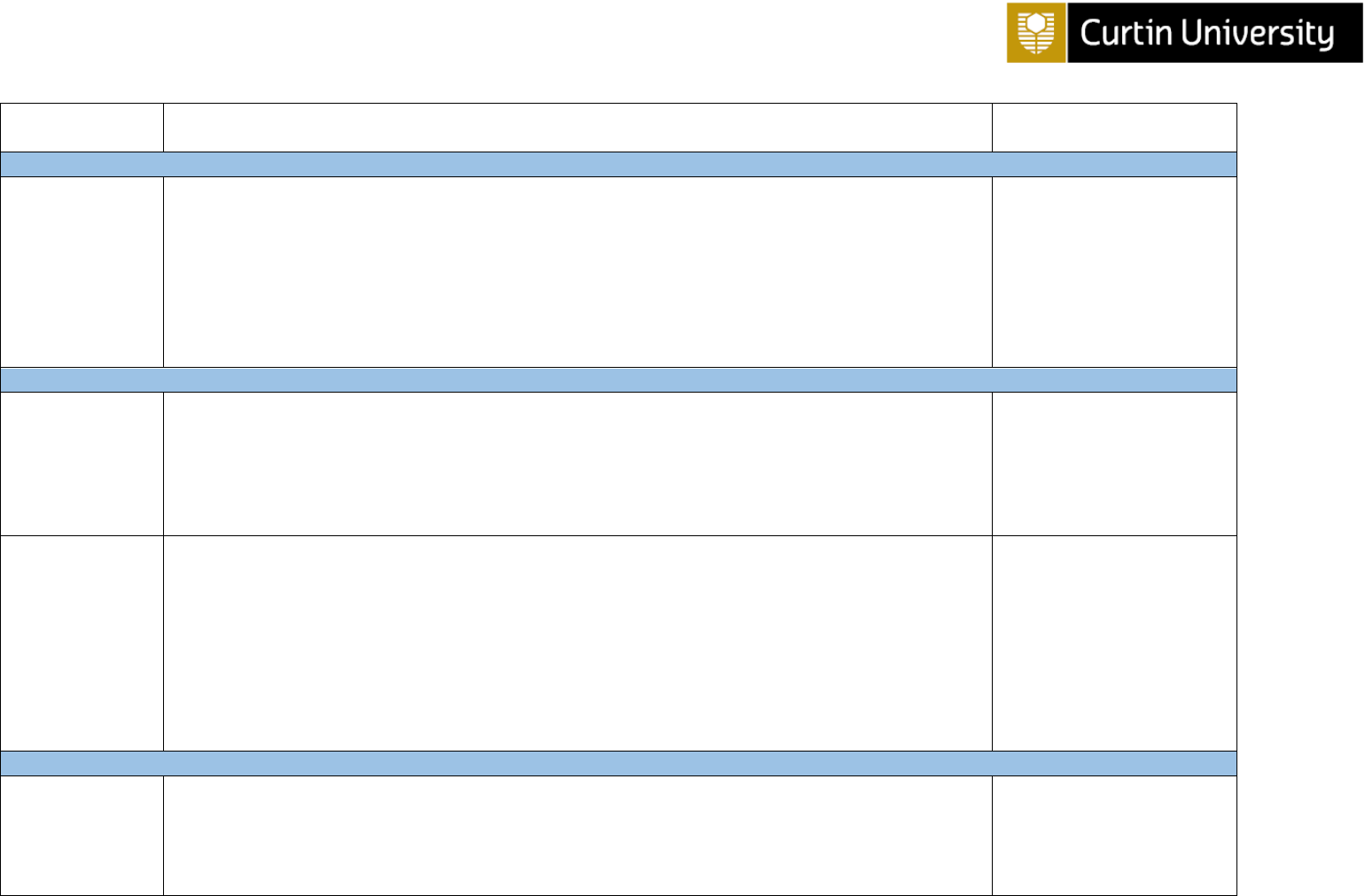
Chicago 17th B reference types for EndNote
bit.ly/curtinuniskills Page 4 of 9
Use for
EndNote fields + reference example
Notes
Reference type – Conference Paper
Conference paper
or poster
Author, Year, Title, Type, Conference Name, Conference Location, Date, DOI or URL
Chadwick, M. B., M. Blann, and S. Hilaire. 2008. "Multistep Direct Preequilibrium Reactions and the
Monte Carlo Approach." Paper presented at the International Conference on Nuclear Data for
Science and Technology, Paris, France, April 23-27, 2007.
https://permalink.lanl.gov/object/tr?what=info:lanl-repo/lareport/LA-UR-07-2498.
Enter Paper in the Type
field.
Reference type – Dataset
Dataset
Investigators, Year, Title, Data Type, Place Published, DOI or URL
Irino, Tomohisa, and Ryuji Tada. 2009. Chemical and Mineral Compositions of Sediments from ODP
Site 127-797. Dataset. Geological Institute, University of Tokyo.
https://doi.org/10.1594/PANGEA.726855.
Enter Dataset in the Data
Type field
Dataset created
using a company
database
Investigators, Year, Title, Data Type, Access Date, DOI or URL
Morningstar Datanalysis Premium. 2014. GICS Industry Metals & Mining: Financial Data. Dataset.
Accessed October 9, 2014. https://datanalysis.morningstar.com.au.dbgw.lis.curtin.edu.au.
Enter Dataset in the Data
Type field
Enter Access Date in the
format Month Day, Year
e.g. October 9, 2014
Reference type – Film or Broadcast
Film or video
Director, Year Released, Title, Format, Series Director, Country, Distributor, URL
Gameau, Damon, and Nick Batzias. 2014. That Sugar Film. DVD. Directed by Damon Gameau.
Australia: Madmen Entertainment.
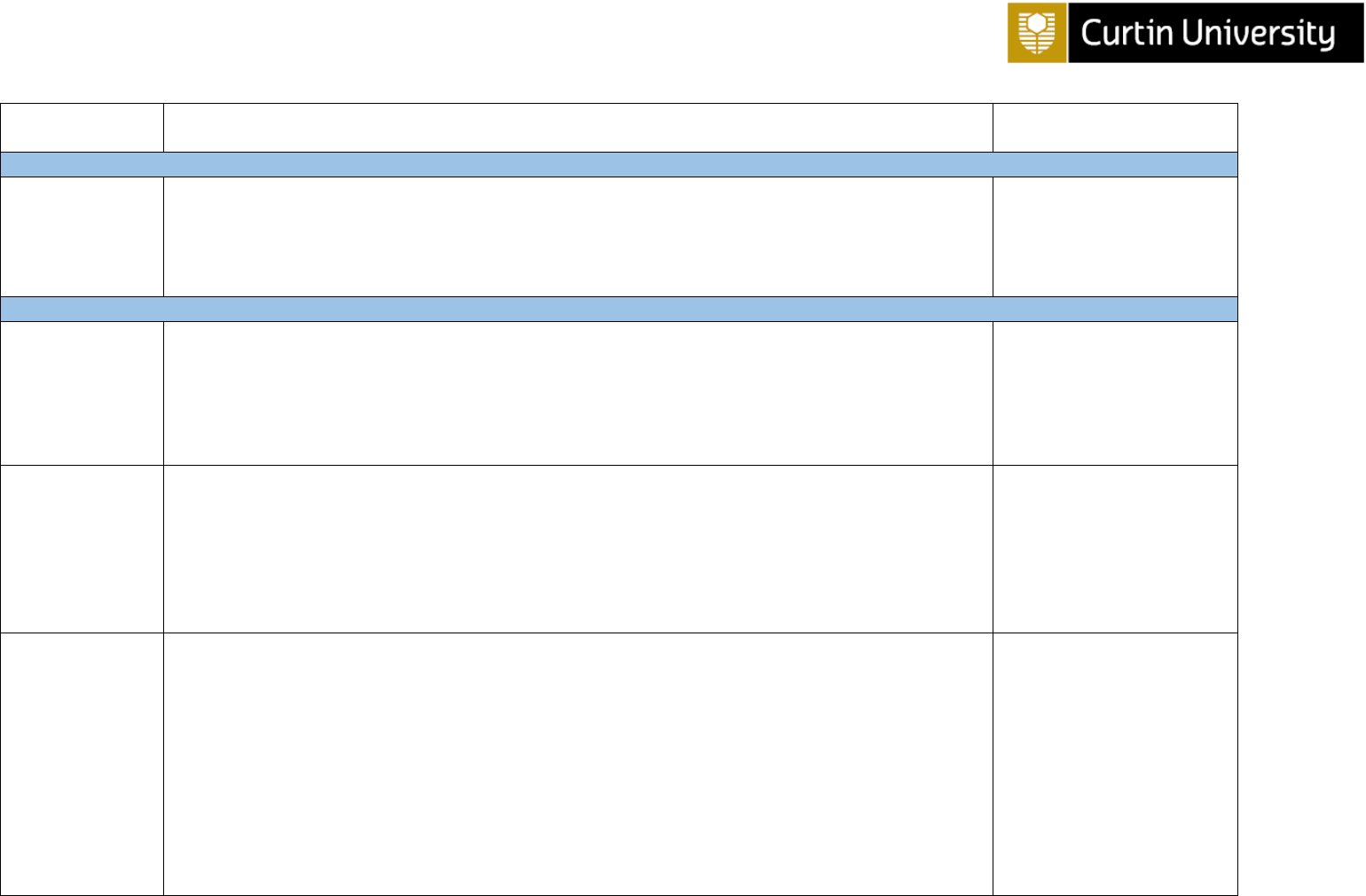
Chicago 17th B reference types for EndNote
bit.ly/curtinuniskills Page 5 of 9
Use for
EndNote fields + reference example
Notes
Reference type – Film or Broadcast
YouTube or
streaming video
Director, Year Released, Title, Format, Running Time, URL
Ellis, Lindsay. 2017. Auteur Theory vs. Michael Bay: The Whole Plate: Episode 2. YouTube video, 12:31.
https://www.youtube.com/watch?v=srk-tPbQVcs.
Reference type – Journal Article
Journal article
Author, Year, Title, Journal, Volume, Issue, Pages, DOI or URL
Burns, Timothy W. 2015. "Philosophy and Poetry: A New Look at an Old Quarrel." American Political
Science Review 109 (2): 326-338. https://doi.org/10.1017/s0003055415000076.
Journal article –
Advanced online
publication
Author, Year, Title, Journal, Issue, DOI or URL
Napoli, Julie, Sonia Dickinson-Delaporte, and Michael B. Beverland. 2016. "The Brand Authenticity
Continuum: Strategic Approaches for Building Value." Journal of Marketing Management
(forthcoming). https://doi.org/10.1080/026725X.2016.1145722.
Enter forthcoming in the
Issue field
Journal article
published in a
supplement
Author, Year, Title, Journal, Volume, Issue, Pages, DOI or URL
Stoody, Eve E., Joanne M. Spahn, and Kellie O. Casavale. 2019. "The Pregnancy and Birth to 24 Months
Project: A Series of Systematic Reviews on Diet and Health." The American Journal of Clinical
Nutrition 109 (Suppl. 1): 685S-697S. https://doi.org/10.1093/ajcn/nqy372.
Enter Suppl. and the
supplement number or
letter in the Issue field
Enter the Pages as they
appear on the article, e.g.
S47-S70
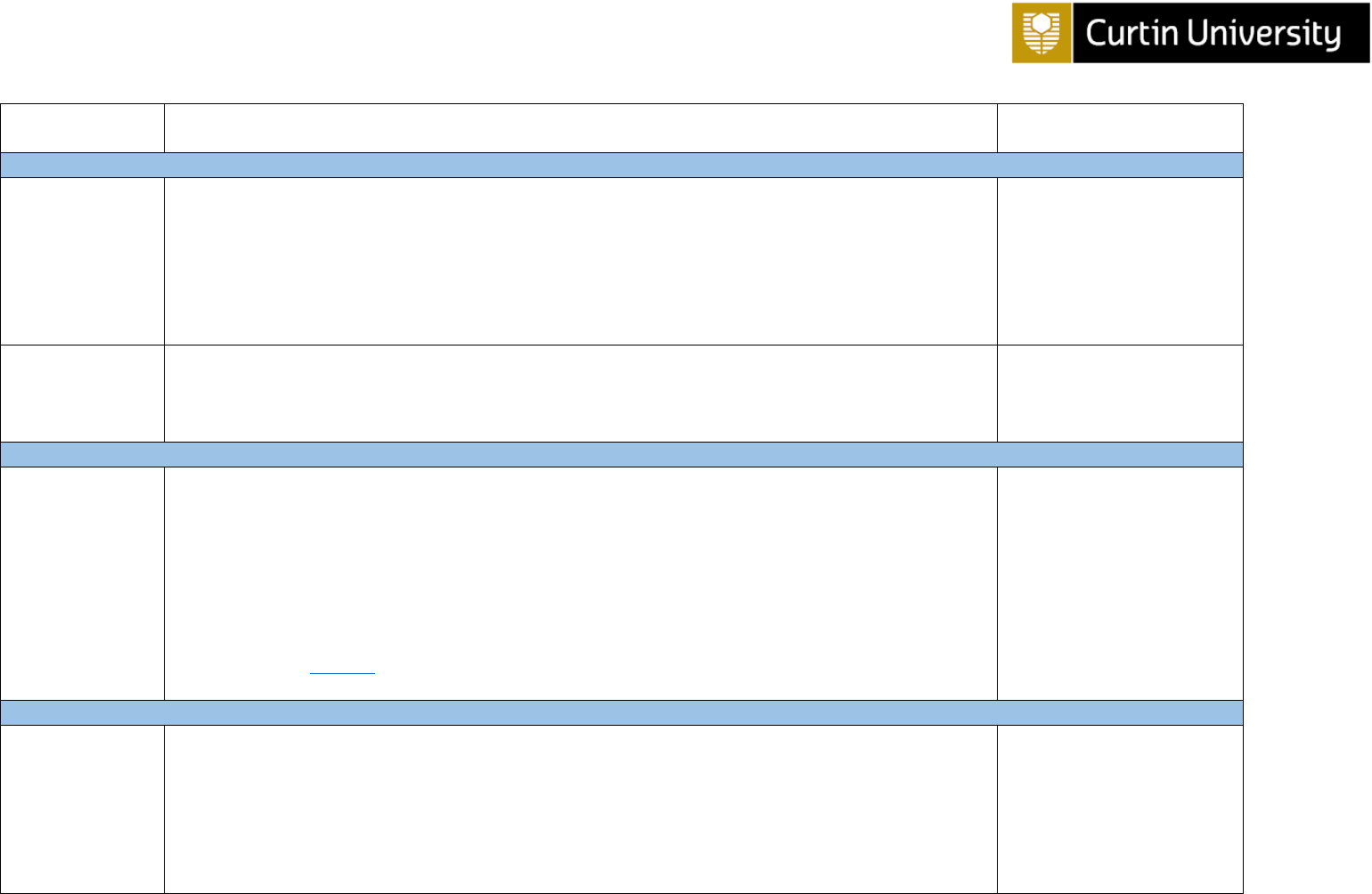
Chicago 17th B reference types for EndNote
bit.ly/curtinuniskills Page 6 of 9
Use for
EndNote fields + reference example
Notes
Reference type – Music
Song
Composer, Producer, Year, Title, Volume, Album Title, Format of Music, Publisher, URL
Rihanna, vocalist. 2007. "Umbrella." Track 1 on Good Girl Gone Bad. MP3 audio. Island Def Jam.
Enter the creator’s role in
the Producer field, e.g.
vocalist.
Enter the track number in
the Volume field.
Album
Composer, Producer, Year, Album Title, Format of Music, Publisher, URL
The Wombats, band. 2017. Beautiful People Will Ruin Your Life. MP3 audio. Warner Music Australia.
Enter the creator’s role in
the Producer field, e.g.
band.
Reference type – Newspaper Article
Newspaper
article
Reporter, Year, Title, Issue Date, Year, Pages, URL
Haberman, Maggie, and Peter Baker. 2017. "In Call with Times Reporter, Trump Projects Air of Calm
over Charges." New York Times, November 1, 2017.
https://www.nytimes.com/2017/11/01/us/politics/trump-russia-charges.html.
For newspaper articles with no author, you will need to manually alter the reference to comply with the Chicago
requirements (see note p. 2
)
For a print newspaper
article, enter the page
number in the Pages field.
Reference type – Pamphlet
Brochure,
Factsheet or
pamphlet
Author, Year, Title, Place Published, Publisher, URL
Department of Health. 2020. When Should Masks Be Worn in the Community, in Australia? Canberra:
Australian Government.
https://www.health.gov.au/sites/default/files/documents/2020/07/when-should-masks-be-
worn-in-the-community-in-australia.pdf.
For print materials, omit the
URL
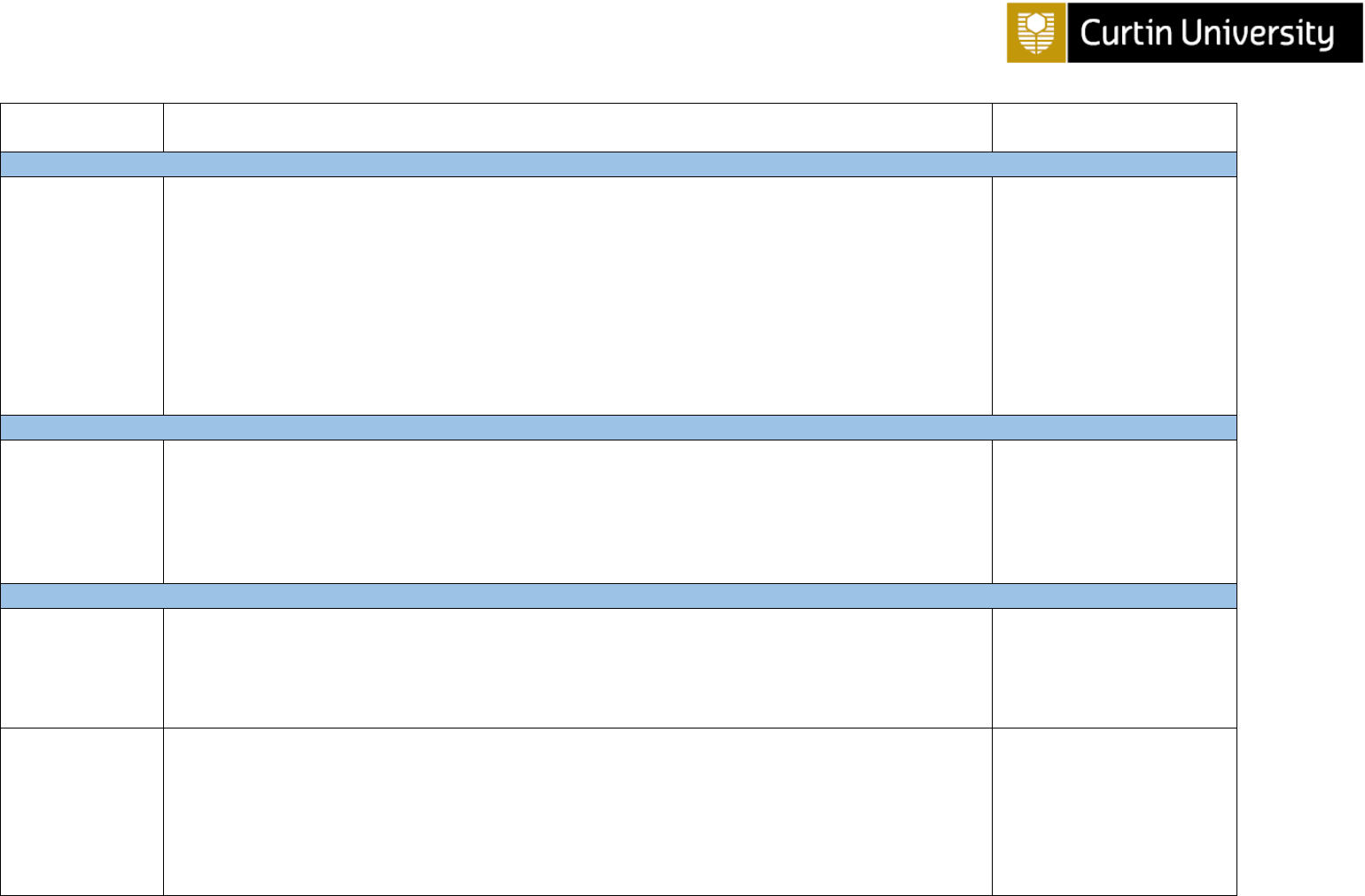
Chicago 17th B reference types for EndNote
bit.ly/curtinuniskills Page 7 of 9
Use for
EndNote fields + reference example
Notes
Reference type – Podcast
Podcast episode
Author, Year, Title of Podcast, Number, Title of Show, Type, Series Title, Place Published, Publisher,
URL
Kilgariff, Karen, and Georgia Hardstark. 2019. "The Baddest of Them All." Episode 196. My Favorite
Murder. Audio podcast. My Favorite Murder Inc. Burbank, CA.
https://myfavoritemurder.com/196-the-baddest-of-them-all.
Enter the title of the
episode in Title of Podcast
field, and the title of the
series in Title of Show field.
Enter Audio podcast in the
Type field.
Enter the name of the
website in Series Title.
Reference type – Press release
Press release
Author, Year, Title, Type of Work, Date, Year, URL
APA (American Psychological Association). 2018. "Dishonest Individuals Perceived as Less Capable."
Press release, January 31, 2018.
https://www.apa.org/news/press/releases/2018/01/dishonest-individuals.aspx.
Enter the type of release in
the Type of Work field.
Reference type – Report
Government or
organisation
report
Author, Year, Title, Report Number, Place Published, Publisher, DOI or URL
CSIRO. 2016. Australia 2030: Navigating Our Uncertain Future. Canberra, ACT: CSIRO.
https://www.csiro.au/en/Do-business/Futures/Reports/Australia-2030.
If there is no report number
leave this field blank.
Annual report
Author, Year, Title, Place Published, Publisher, DOI or URL
Qantas. 2018. Qantas Annual Report 2018. Sydney: Qantas.
http://investor.qantas.com/FormBuilder/_Resource/_module/doLLG5ufYkCyEPjF1tpgyw/file/
annual-reports/2018-Annual-Report-ASX.pdf.
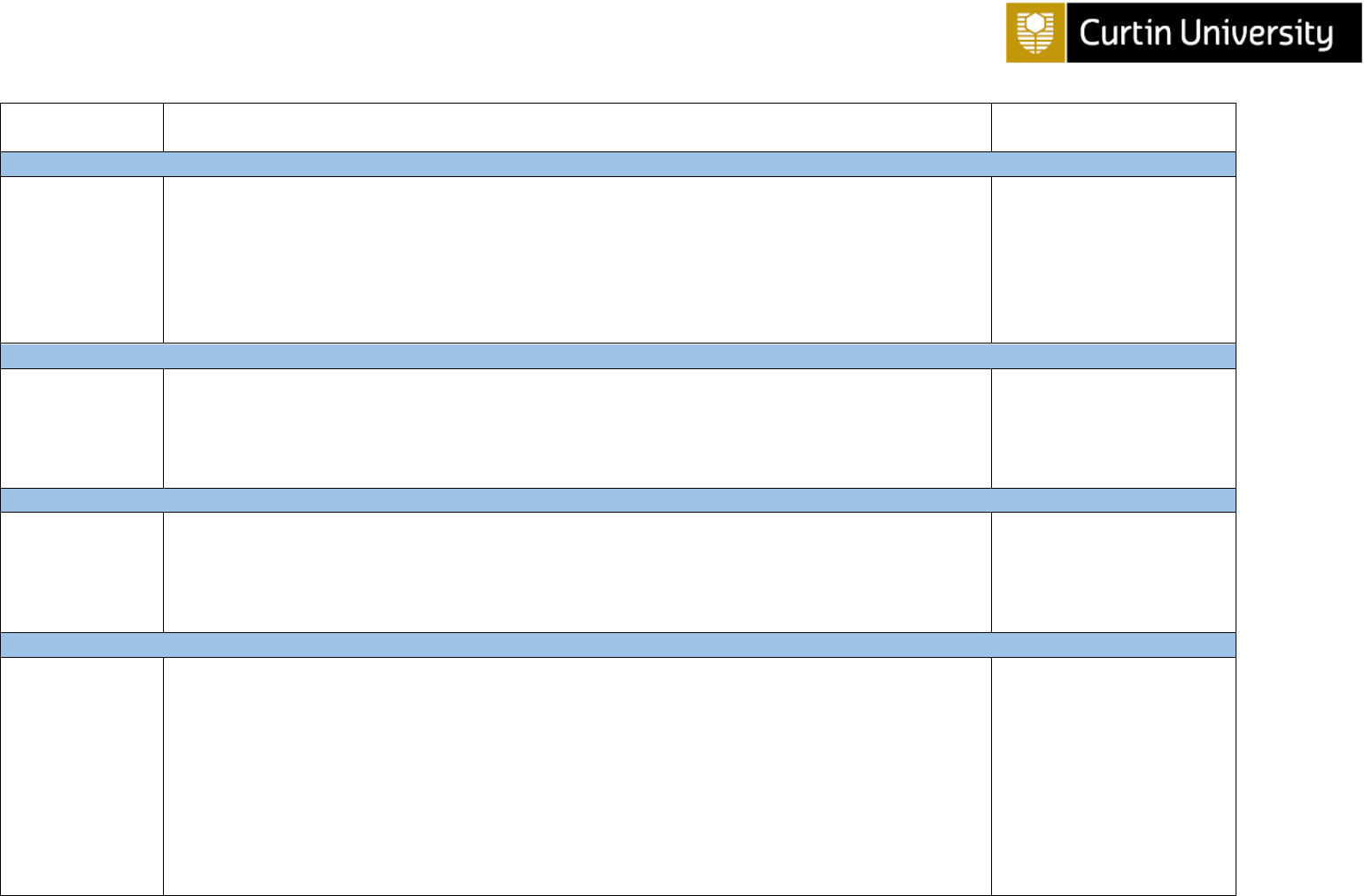
Chicago 17th B reference types for EndNote
bit.ly/curtinuniskills Page 8 of 9
Use for
EndNote fields + reference example
Notes
Reference type – Social Media
Facebook,
Instagram,
Twitter
Username, Handle, Year, Post Text, Provider, Post Date, Year, Time, URL
Jackman, Hugh (@RealHughJackman). 2015. "At the dentist…This is BEFORE I found out I was having a
tooth pulled photo!" Twitter, November 12, 2015, 5:42 a.m.
https://twitter.com/RealHughJackman/status/664800426961870849.
EndNote will display the
post text in headline-style
capitalisation. You will need
to alter this manually to
follow the capitalisation
used in the post (see note
on p. 2)
Reference type – Standard
Standard
Institution, Year, Title, Document Number, Publisher, URL
Standards Australia. 2009. Wire-Rope Slings: Product Specification. AS 1666.1-2009. SAI Global.
https://www.saiglobal.com.
Enter the standard number
in the Document Number
field.
Reference type – Television Episode
TV series episode
Producer, Year, Episode Title, Season, Episode No., Title, Medium, Location, Distributor, URL
Bender, Jack. 2016. "The Door." Season 6, Episode 5. Game of Thrones. Television program. New York:
HBO.
Reference type – Thesis
Thesis
Author, Year, Title, Thesis Type, University, URL
Gao, Wenran. 2018. "Fuel Properties and Thermal Processing of Bio-Oil and Its Derived Fuel
Mixtures." PhD diss., Curtin University.
https://espace.curtin.edu.au/handle/20.500.11937/75545.
Enter the type of thesis, e.g.
Master’s thesis or PhD diss.
in the Thesis Type field
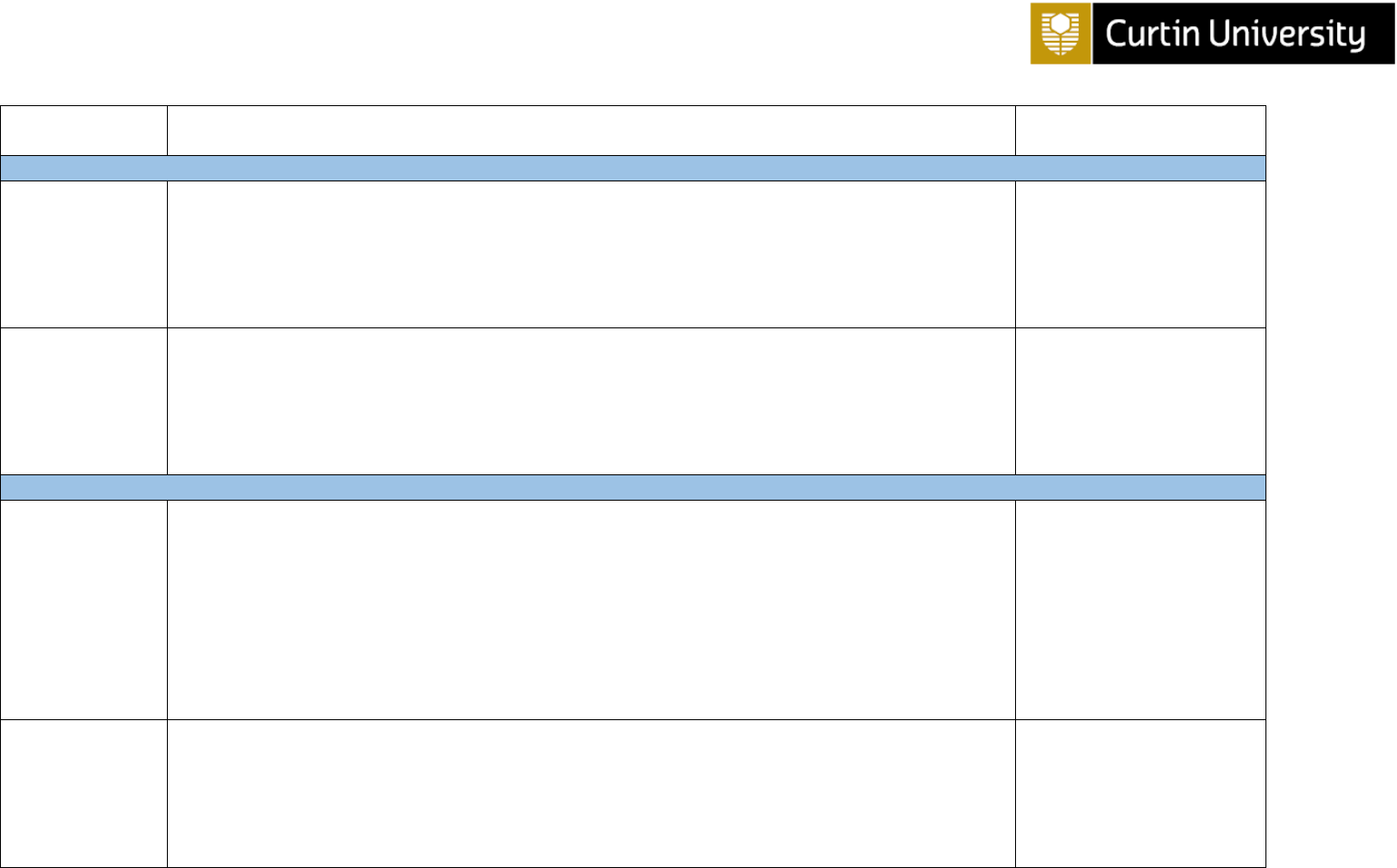
Chicago 17th B reference types for EndNote
bit.ly/curtinuniskills Page 9 of 9
Use for
EndNote fields + reference example
Notes
Reference type – Unpublished Work
Lecture
Author, Year, Title of Work, Type of Work, URL
Leaver, Tama. 2012. "Social Media Rivers." iLecture.
https://echo.ilecture.curtin.edu.au:8080/ess/echo/presentation/893b5284-ecad-4ad4-8af7-
0ad2a1e19e24.
Enter the format of the
lecture in the Type of Work
field, e.g. iLecture,
PowerPoint slides
Company or
industry profile
from a database
Author, Year, Title of Work, Series Title, URL
Euromonitor International. 2020. "Ferrero & Related Parties in Packaged Food (World)." Passport.
https://www.warc-com.dbgw.lis.curtin.edu.au/content/article/euromonitor/ferrero-and-
related-parties-food/90830.
Reference type – Web Page
Entire website
Author, Year, Series Title, Access Date, Access Year, URL
Government of Western Australia. n.d. Perth Zoo. Accessed March 12, 2018.
https://perthzoo.wa.gov.au.
Enter the title of the
website in the Series Title
field.
If there is no date for the
website, enter n.d. in Year
and include an Access Date
and Access Year.
Webpage on a
website
Author, Year, Title, Publisher, Access Date, Access Year, URL
DET (Department of Education and Training). 2016. "Improving Australian and European Mobility."
Australian Government. https://www.education.gov.au/news/improving-australian-and-
european-mobility.
If there is no date for the
website, enter n.d. in Year
and include an Access Date
and Access Year.
